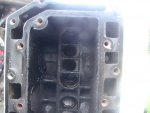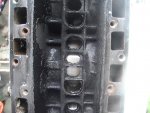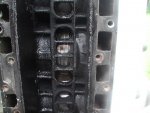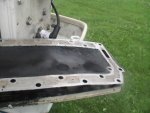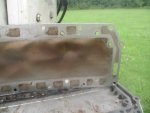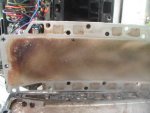Well, since the gaskets are already stuck on, just let them be. The rusted bolts really should be replaced. either buy new steel ones and protect them from rust with silicone or buy stainless. Stainless and aluminum do set up a greater galvanic reaction than steel and aluminum but I prefer them. I use plenty of grey anti-seize on them to hopefully isolate them from the aluminum. Grey is a nickel based anti-seize. Tighten these 1/4-20 bolts to 70 INCH pounds.
NOW for the technical part. There are MANY variations of two cycle engines. Some use the piston skirt to open and close a third port, eliminating reeds. Some use a timed, ported crankshaft to eliminate reeds. And some use a disc valve at the back of the crankcase, driven by the elongated crankpin. This is suitable mainly for single cylinder engines. Both the disc valve and ported crankshaft are much more precise than reeds and for a given displacement engine will produce more power.
Lastly. old General Motors buses used a GMC two cycle V8 diesel engine. It had regular overhead valves in the head for exhaust and ports at the bottom of the cylinders. The infamous GMC 6-71 Blower which almost every top fuel dragster had as standard equipment in the 1960s and 70s was mounted on top and pressurized the valley between cylinders. I don't remember the exact cycle, but when the piston cleared the ports, pressurized air scavenged residual exhaust and overfilled the cylinder. They did make various sizes of blower---2-71, 4-71, 6-71.
Why do outboards have reeds? Why is the sky blue? Actually, just like auto makers, outboard manufacturers are sluggish with change and the first PRACTICAL outboards had reed valves because they were simple to manufacture and a bit more efficient than third ports uncovered by the piston skirt. There was one old time engine, I think it was caller the Oliver, that used a ported crankshaft and single carb to feed two small cylinders.




















